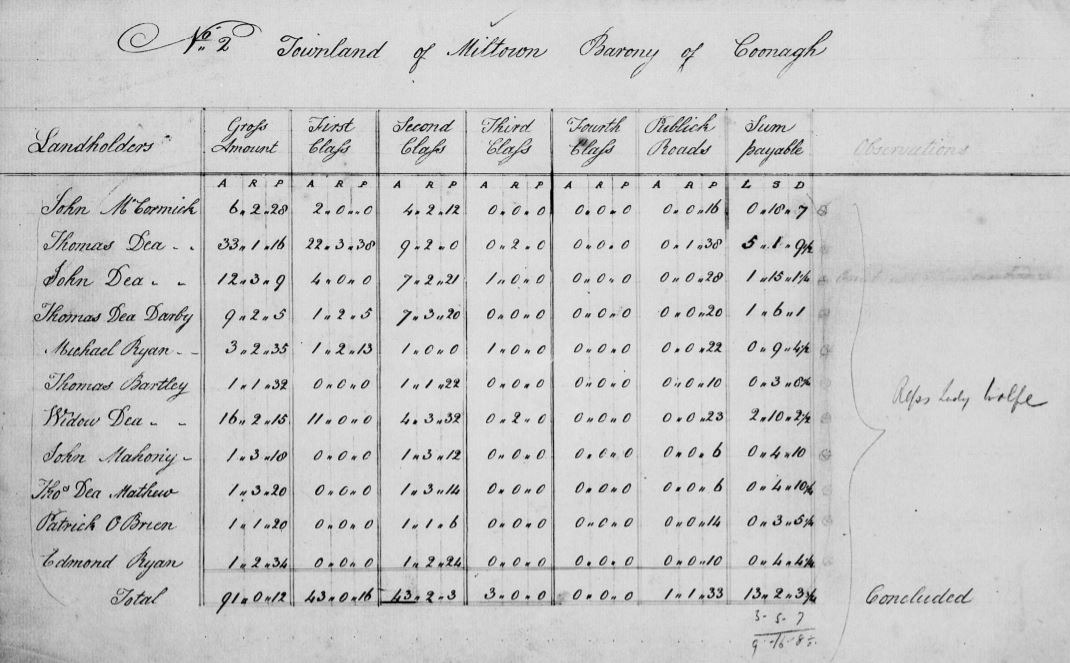
Click to enlarge
THE TITHE APPLOTMENT SURVEY
Tithes had long been a source of agrarian upheaval in Ireland due to the resentment of the Catholic farming population who saw tithes as merely a second rent. Secret societies were formed with agendas that included assassination of landlords and tithe collectors. These societies also resented paying a second tithe to the Catholic Church, which were also concidered to be too expensive, and payment details of which were read from the alter in order to use disgrace as a weapon to ensure payment.
The Tithe Composition Act of 1823 was an effort by the government to solve the problem, which saw tithes commuted to a cash rent based on corn prices. The tithe applotment books regulated this process by recording land quality and local corn prices in each parish. This is the record that we now know as the Tithe Applotment books, but it did not solve the problem.
The Tithe Applotmdent Books then were compiled between 1823 and 1837 in order to determine the amount which occupiers of agricultural holdings over one acre should pay in tithes to the Church of Ireland (the main Protestant church and the church established by the State until its dis-establishment in 1871). Catholics often refused to pay tithes to any Church other than their own and the requirement to support the Church of Ireland was seen as a major hardship on the already financially strapped Irish farmers.
(Much thanks to Paul MacCotter's Genealogy and Family History Service for much of this information)